Do you have a question about the DeVilbiss Pro Lite E and is the answer not in the manual?
Covers fluid/air pressures, environmental limits, and general operating specifications.
Details materials of construction, connections, weight, and dimensions.
Specifies suitable materials and hazardous area classification for the spray gun.
Lists conformity with EU directives and relevant harmonised safety standards.
Explains the meaning of WARNING, CAUTION, and NOTE symbols used throughout the manual.
Covers hazards like flammability, static charge, toxic vapours, noise, and high pressure.
Presents performance data for different air cap types including air consumption and fan pattern size.
Details recommended fluid tip and air cap pairings for optimal atomisation.
Lists available ceramic fluid tips and needles by size and material type.
Lists main parts of the spray gun with reference numbers, part numbers, descriptions, and quantities.
Details available repair kits and service parts for the spray gun.
Lists remaining parts, kits, and special tools required for maintenance.
Provides a numbered sequence for connecting, mixing, and initial test spraying.
Offers guidance on hose selection, pressure adjustment, and quick connect couplings.
Details procedures for cleaning air caps, fluid passages, and the gun exterior.
Explains the key used to denote disassembly order and item numbers.
Provides notes on replacing fluid tips, needles, and packing, including torque specifications.
Advises on preventing damage during fluid tip tightening or loosening operations.
Addresses common mechanical issues like 'Will not spray' and provides corresponding corrections.
Details causes and corrections for slow fluid leaks from the tip and needle seat.
Explains problems related to fluid needle packing wear or looseness and their resolution.
Identifies causes and corrections for small air leaks from the air cap when the gun is not triggered.
Covers issues like heavy top/bottom or side patterns due to buildup or plugged holes.
Explains how to determine if a spray pattern issue originates from the air cap or fluid tip.
Details causes for heavy centre patterns and intermittent spray fan issues.
Covers causes and corrections for split spray patterns related to material flow and air pressure.
Addresses ball end heavy patterns, runs, sags, and their relation to fluid flow and material consistency.
Explains causes for a thin, sandy finish and issues related to insufficient fluid flow.
Lists and describes various accessories such as pressure gauges, tools, and air hoses.
Outlines the limited warranty period, terms, and provides contact details for customer support.
Covers fluid/air pressures, environmental limits, and general operating specifications.
Details materials of construction, connections, weight, and dimensions.
Specifies suitable materials and hazardous area classification for the spray gun.
Lists conformity with EU directives and relevant harmonised safety standards.
Explains the meaning of WARNING, CAUTION, and NOTE symbols used throughout the manual.
Covers hazards like flammability, static charge, toxic vapours, noise, and high pressure.
Presents performance data for different air cap types including air consumption and fan pattern size.
Details recommended fluid tip and air cap pairings for optimal atomisation.
Lists available ceramic fluid tips and needles by size and material type.
Lists main parts of the spray gun with reference numbers, part numbers, descriptions, and quantities.
Details available repair kits and service parts for the spray gun.
Lists remaining parts, kits, and special tools required for maintenance.
Provides a numbered sequence for connecting, mixing, and initial test spraying.
Offers guidance on hose selection, pressure adjustment, and quick connect couplings.
Details procedures for cleaning air caps, fluid passages, and the gun exterior.
Explains the key used to denote disassembly order and item numbers.
Provides notes on replacing fluid tips, needles, and packing, including torque specifications.
Advises on preventing damage during fluid tip tightening or loosening operations.
Addresses common mechanical issues like 'Will not spray' and provides corresponding corrections.
Details causes and corrections for slow fluid leaks from the tip and needle seat.
Explains problems related to fluid needle packing wear or looseness and their resolution.
Identifies causes and corrections for small air leaks from the air cap when the gun is not triggered.
Covers issues like heavy top/bottom or side patterns due to buildup or plugged holes.
Explains how to determine if a spray pattern issue originates from the air cap or fluid tip.
Details causes for heavy centre patterns and intermittent spray fan issues.
Covers causes and corrections for split spray patterns related to material flow and air pressure.
Addresses ball end heavy patterns, runs, sags, and their relation to fluid flow and material consistency.
Explains causes for a thin, sandy finish and issues related to insufficient fluid flow.
Lists and describes various accessories such as pressure gauges, tools, and air hoses.
Outlines the limited warranty period, terms, and provides contact details for customer support.
| Type | HVLP |
|---|---|
| Fluid Tip Options | 1.3 mm |
| Nozzle Size | 1.3 mm |
| Air Inlet Size | 1/4 inch |
| Material | Aluminum |
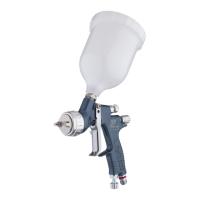
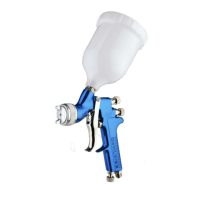
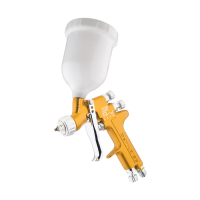
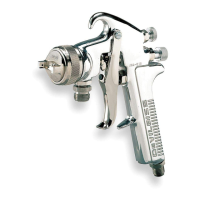
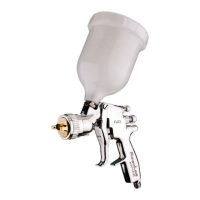
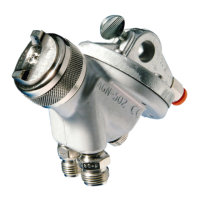
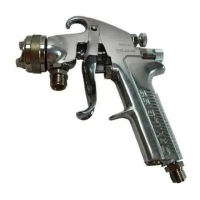
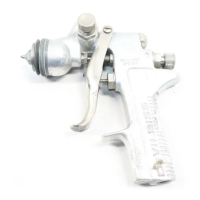
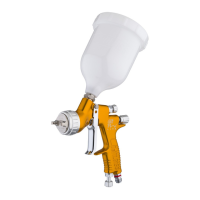
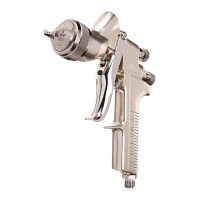
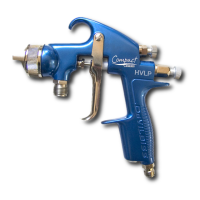
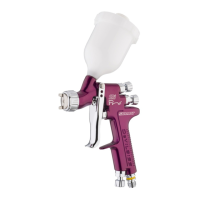
